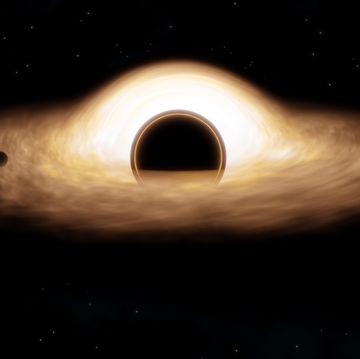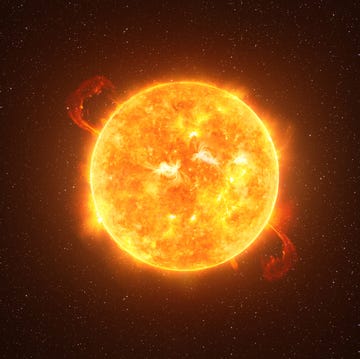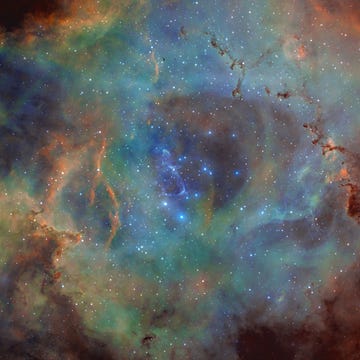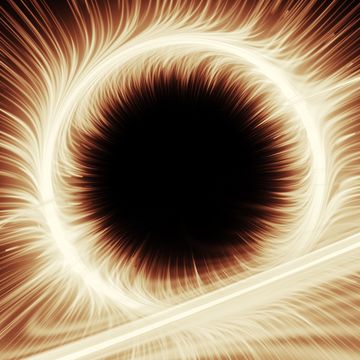- Cosmic strings are hypothetical topological defects, often described as “cracks” in the universe, that theoretically formed during the quantum chaos immediately following the Big Bang.
- Although the theory that these cracks exist was first put forth in the 1970s, cosmic strings have yet to be observed.
- However, a new study from the Indian Institute of Astrophysics details several possible cosmic string candidates in a field of the universe known as CSc-1.
The Big Bang—that massive cosmic event that created everything—was a cataclysm that our human brain can hardly fathom. In the one-hundredth of a second following the event, the early universe experienced a phase change within its quantum field, similar to how water forms bubbles when boiling (except at much higher temperatures).
It was in this roiling chaos that some scientists theorize that cracks formed in the universe—hypothetical topological defects called cosmic strings (CS).
The theory behind the existence of these cosmic strings was first put forth in the 1970s. But as of now, cosmic strings have eluded scientists for decades. Researchers had hoped that evidence would appear in the Cosmic Microwave Background (CMB)—the leftover radiation from the Big Bang—but they had no such luck. The cosmic string hypothesis was revived in the early 2000s in the context of String Theory, as proponents believed that these strings could provide observational signatures of the as-until-now still unsubstantiated CS theory.
That’s why it was big news when, last month, scientists from the Indian Institute of Astrophysics announced the presence of several compelling cosmic string candidates, one of which was a field of space known as CSc-1. The results of the study were accepted into the Bulletin de la Société Royale des Sciences de Liège, and the paper itself is currently available on the non-peer reviewed preprint server arXiv.
The study focused on the brightest objects in that field to make their case—a galactic pair known memorably as SDSSJ110429.61+233150.3. The research team posits that this pair is actually just one galaxy that appears to be two due to gravitational lensing. Gravitational lensing—when gravitational fields distort light around objects in space—can be caused by massive galaxy clusters between Earth and other observed part of space.
“The significant correlation between the spectra of the two components indicates the possible GL (gravitational lensing) nature of the pair. Our simulations of observational data in the CSc-1 field shows that a large number of pairs can be explained by the complex geometry of the CS (cosmic string),” the paper reads. “Simulations of the SDSSJ110429 galaxy pair has shown that the observed angle between the components of the pair can be explained if the CS is strongly inclined and, possibly, bent in the image plane.”
Although this gravitational lensing can be explained by a strong inclined, or bent, cosmic string, the research team is cautious about its discovery, considering no evidence of such a defect from the early universe has ever been found. They acknowledge that the absence of mass in front of these “twinned” galaxies may simply mean that there are in fact two galaxies present, and also confirm that the light spectra of the two are identical, which is strong evidence that they are actually duplicates.
Moving forward, the team advocates for a deeper search of CSc-1 with a 4-meter class telescope, such as the Devasthal Optical Telescope in Nainital, India.
This study doesn’t provide the hard proof that astrophysicists have been hunting for the past half century—after all, that’s a pretty high bar. But it may be step in a promising direction.
Darren lives in Portland, has a cat, and writes/edits about sci-fi and how our world works. You can find his previous stuff at Gizmodo and Paste if you look hard enough.













